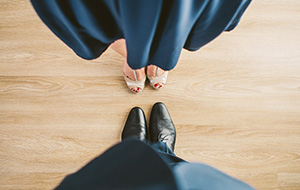 Dance exams can be a scary business, however they can also be the highlight of the year. They are a chance for dance students to demonstrate their dance ability to an objective eye, showing how much they have worked on what they have learnt, be it pre-primary or advanced 2. They can be just as scary for teachers, hoping that their hard work with their students will be observed by the examiner, and it will carry the students through their exam session.
Dance exams can be a scary business, however they can also be the highlight of the year. They are a chance for dance students to demonstrate their dance ability to an objective eye, showing how much they have worked on what they have learnt, be it pre-primary or advanced 2. They can be just as scary for teachers, hoping that their hard work with their students will be observed by the examiner, and it will carry the students through their exam session.
Dancing is of course fun, practised for enjoyment first and foremost, combined with dedication and hard work. Exams consequently require lots of work physically and mentally, and when it is over there is often a huge sense of relief! Exams can be strange performances, solely for the unknown examiner who is the main focal point in the room. It is often that itches and sweat become even more uncomfortable in an exam, dancing under close scrutiny.
The examiner must be impressed both technically and artistically, with the students demonstrating their adequate skill level in both. Despite this, examiners are not always as scary as they come across; teachers or tutors may have become examiners because they enjoy witnessing skills and giving teachings back to students and their dance schools, sharing knowledge and ensuring the standard of dance remains high. Ultimately they want to mark students up knowing they have done their best, contributing to the evolving education of the next generation of dancers and teachers.
Many examiners are sent on journeys to examine students far away from the areas in which they work. It can be a long time away from their own students and dance school if they already teach, as well as their own home. Taking a positive from this, it is important that examiners travel to different areas or perhaps even countries; the exam they are observing will be of the same high standards to adjudicate, demonstrating the consistency of teaching and expectation in dance across the world.
